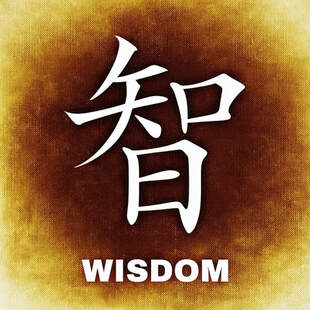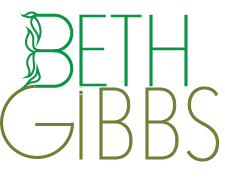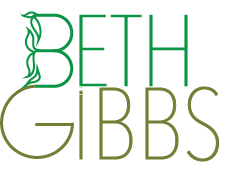ENLIGHTEN UP! a blogSelf-awareness stories: lighting our way to clarity, contentment and resilience in a complicated world.
|
 In my last post, I explored Steps 3 & 4: Working with the Mind. In this post, I talk about step 5, turn the mind back on itself and step 6, take skillful action. The Taittiriya Upanishad, the philosophical and spiritual source of this contemporary view of self-awareness has this to say about these steps. “Within the mental sheath, made up of waves Of thought, there is contained the sheath of wisdom. It has the same form, with faith as the head, Righteousness as right arm and truth as left. Practice of meditation is its heart, And discrimination its foundation.” — The Upanishads, translation by Eknath Easwaran With practice we can employ intuitive wisdom on a daily basis to become aware of and reflect on our habits, beliefs and behaviors but first we need a clear understanding of how intuitive wisdom relates to the mind. Intuitive wisdom, for our purposes, is often referred to as higher intelligence, insight and/or intuition. It’s the lamp of self-awareness that illuminates all aspects of ourselves for understanding, acceptance and integration. The goal is two-fold. One, to become aware of and manage any unhelpful core beliefs, habits and behavior patterns until they loosen and release their tight hold on us and two, to recognize, celebrate and share our creativity and talents. Intuitive wisdom can be thought of as a layered intelligence consisting of our everyday ability to think, reason, apply knowledge, and manage our environment. It interrelates with, overlaps, and shares space with the mind. To visualize this, imagine two circles that overlap for 30% of their circumference, like a Venn diagram. One circle is the mind and the other is intuitive wisdom. Here’s an example that helps us understand how they work together. A core belief that “I’m not good enough,” can exist in both the mind and in intuitive wisdom circles but at different levels of awareness. In the intuitive wisdom circle, “I’m not good enough,” might be seen, and sourced as messages of unworthiness from family, friends and the society at large for any number of reasons; race, gender, gender identification, class, physical or mental ability etc. In the mind circle, “I’m not good enough,” might be believed and expressed through anxiety, depression, addictions or self-sabotaging behaviors. However, intuitive wisdom seeing where the belief comes from, and knowing that, “I’m not good enough,” is not true, does its best to send that message to the mind through the overlapping space the two layers share. This happens often during a relaxing activity when the mind is at rest. It can also include a flash of intuition or a gut feeling. When the mind opens to receive the message, it may experience an aha! moment of total understanding or be able to acknowledge that the cause and source of the belief will need to be examined. In either case, steps can be taken to make a choice for positive change, keep the status quo with full knowledge of the consequences or find acceptance if change is not possible. When the light of intuitive wisdom shines, you will be able to employ skillful action to change a habit, replace an unhelpful thought pattern with a productive one, or change an emotional reaction into a productive response. This process results in increased calm and resilience in the way you face the events of your life. Let’s see how this works with the example from steps 3 & 4 working with the mind where we found ourselves stuck in traffic on the way to an appointment, a class or a friend’s house for dinner. In working with the mind we first took step 3:
Then we moved to step 4 to explore our beliefs:
Now let’s go deeper with steps 5 & 6. Step 5. Turn the mind back on itself to uncover the source of the wait/fear/control belief
Step 6. Take skillful action
Sometimes tuning into intuitive wisdom is a two level process. When it occurs in the moment, it enables you to hit pause in the space between what is happening and how you might respond. Sometimes it occurs with reflection. You reflect on a past situation to catch a glimpse of where an unhelpful belief comes from and why it’s impacting your life. If you are like me, you will take one step forward, and two steps back on this journey. This will happen over and over again. Remember, it’s a process, sometimes painful and sometimes joyful but one worth doing because the juice is worth the squeeze. In the next post we’ll complete this series with step 7, find your bliss, step 8, connect to your bliss, and step 9, bring bliss into your daily life.
2 Comments
This is wonderful, Beth. Just discovered you today through Chanticleer.
Reply
6/18/2023 10:04:25 am
Jan, Thanks so much for your comment and feedback. All the best!
Reply
Your comment will be posted after it is approved.
Leave a Reply. |
Archives
July 2024
AuthorBETH GIBBS started her yoga practice in 1968, four months after her son was born and she’s been practicing ever since. She currently teaches all levels therapeutic yoga classes for adults, and specialty classes for seniors in the Hartford, Connecticut area. Beth is a certified yoga therapist through the International Association of Yoga Therapists and is guest faculty at the Kripalu School of Integrative Yoga Therapy. She writes for the blogs, Yoga for Healthy Aging, and Accessible Yoga. Her master’s degree from Lesley University in Cambridge, MA is in Yoga Therapy and Mind/Body Health. Categories |
|
|
Enlighten Up! a Blog
|
Copyright © 2023 Beth Gibbs

 RSS Feed
RSS Feed
